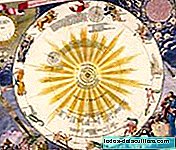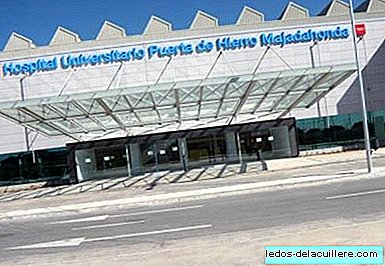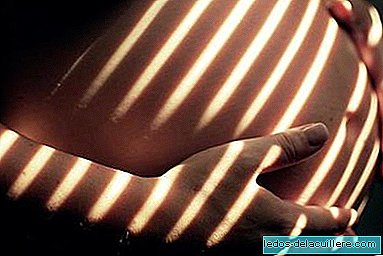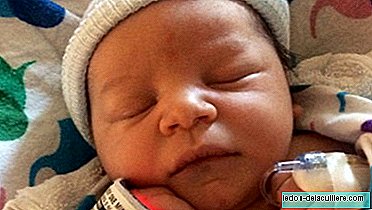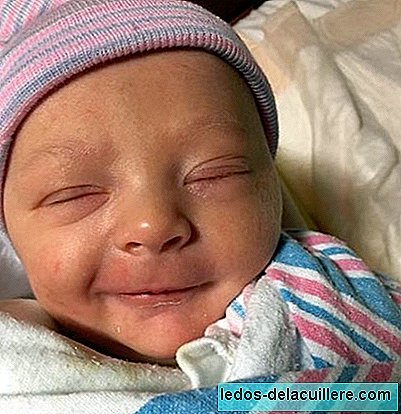When the baby is born and is separated from the placenta, it is left with a small piece of umbilical cord that must be dried, mummified, to finally fall. It is a process that lasts about 7 to 10 days that, as a general rule does not generate major setbacks, but that sometimes it gets complicated if a cord infection occurs, better known as omphalitis.
In the first world it is not a major problem, because we have treatments to treat these infections (it is dangerous, eye, and you have to go to the hospital urgently, but we have antibiotics). However, in poor countries it is estimated that affects between 55 and 197 per 1,000 live births, being in many occasions mortal, and especially for them it is of utmost utility to know what is the best method to cure the baby's navel.
Well, to date it was considered that one of the best ways was to keep it clean and dry, or in any case apply some type of antiseptic as we do in Spain (70º alcohol), and now a study opens the door to a method that At first it sounds very strange to all of us but that could be the best solution: heal the cord with breast milk.
Normal umbilical cord care
And I say normal because it is what is considered usual, the current recommendation. According to a review of studies conducted by WHO in 2004, which included 22 studies with 8,959 babies, they saw that it was indifferent how the navel was cured when comparing the use of antiseptic with cord care with water and keeping it dry.
Come on, those parents who did nothing but keep the baby's cord clean and dry had the same prognosis (the same number of cord infections in the baby) as those who cured it with an antiseptic or a placebo.
Given this evidence, and seeing that other studies associate the use of antiseptic with a longer waiting time until the fall (It seems that it takes more days to fall), it was suggested that nothing in particular be done with the cord beyond keeping it clean and dry, recommending the use of antiseptic in those places where the risk of bacterial infection was high (poor hygiene, poor diet, etc.)
That is, it seems that we are doing it the other way around: where we don't need the antiseptic we use it and where it would be necessary they probably don't use it because they don't have them.
What other methods do they use?
So to find out what to do in countries where omphalitis are more dangerous, Cairo researchers have conducted a study, first to find out what methods are used in the traditional way to heal babies' cords and then see if which in theory might seem useful, breast milk, is effective.
Well, they saw that by popular transmission it is used: water with a warm cloth, soap and water, butter, cooking oil, olive oil, alcohol, silk powders (similar to talcum powder), breast milk, camphor oil, a bandage on the navel, gentian violet, iodized solution and normal water, and decided to compare what is supposed to be the best method (that the cord is clean and dry) with the application of breast milk.
Thus, they made two groups of women, with their respective babies, who were taught how to heal the cord of their babies once they were born. To those who had to keep it clean and dry they were told to check it three times a day and when changing the diaper, and that if it was clean and dry they did not have to do anything, but if at any time they saw it dirty or there was urine or feces , then they had to clean it well with cotton gauze with sterile water so that there are no remains and then with another gauze dry it well. Also leave the diaper folded down to give him the air and never be wet.
Those who had to cure it with breast milk were explained that they had to wash your hands before pumping and the only thing they had to get was to leave between 4 and 6 drops of colostrum or breast milk to apply to the baby's cord. Then they had to wait for it to dry and finally leave the diaper also folded down. They did it from the 4 hours of birth their babies, three times a day, until two days after the cord had fallen.
And what did they see?

When comparing the use of colostrum and breast milk (when colostrum passes into breast milk at the time the milk rises) with what is considered the best method to heal the baby's cord, which is to keep it clean and dry, they saw that :
- To babies whose cord had been cured with breast milk they dropped, on average, at 4.2 days, while the others dropped, on average, at 7.12 days.
- Babies who had been cured with breast milk had their cord bled (you already know that it is normal for a little blood, a few drops of blood, at some point) 1.28 days on average after the fall, while the others bled an average of 3.38 more days.
- Babies who had been cured with breast milk were seen secretions in the cord (sometimes they stain some secretion that has no bad smell) 1.88 days after the fallwhile the others went during 2.18 days on average: In this case, the difference was not considered significant.
- When analyzing the cord samples of the babies, the differences were not too significant, being Staphylococcus Epidermises in almost all cord samples (normal) in the two groups, and twice as many cases (4% vs. 2% of children) of Staphylococcus aureus in the laces of the parents who had to keep it clean and dry. Other studies comparing these interventions seem to show more differences, leaving the intervention of the cure with sterile water worse if you see the dirty cord.
How is it possible?
As we read in the study's own introduction, the researchers relied on the hypothesis that human milk contains large amounts of IgA antibodies, which appear to have a preventive effect on skin infections. In addition, breast milk has antibacterial and antiviral effects that can help a lot at the topical level. On the other hand, it contains two kinds of the main muscle growth factors, which promote cartilage repair and wound healing (Remember that it is a great method to treat eczema of atopic skin).
For all this, and other possible properties, the application on the cord can help avoid pathogenic substances and help faster mummification, which causes an early fall of the cord, thereby decreasing the risk of infection, since the earlier it falls, the less likely it is to become infected.
By the way, to say that I have seen the mention of this study on the Facebook page of the Breastfeeding Committee of the Spanish Association of Pediatrics.


